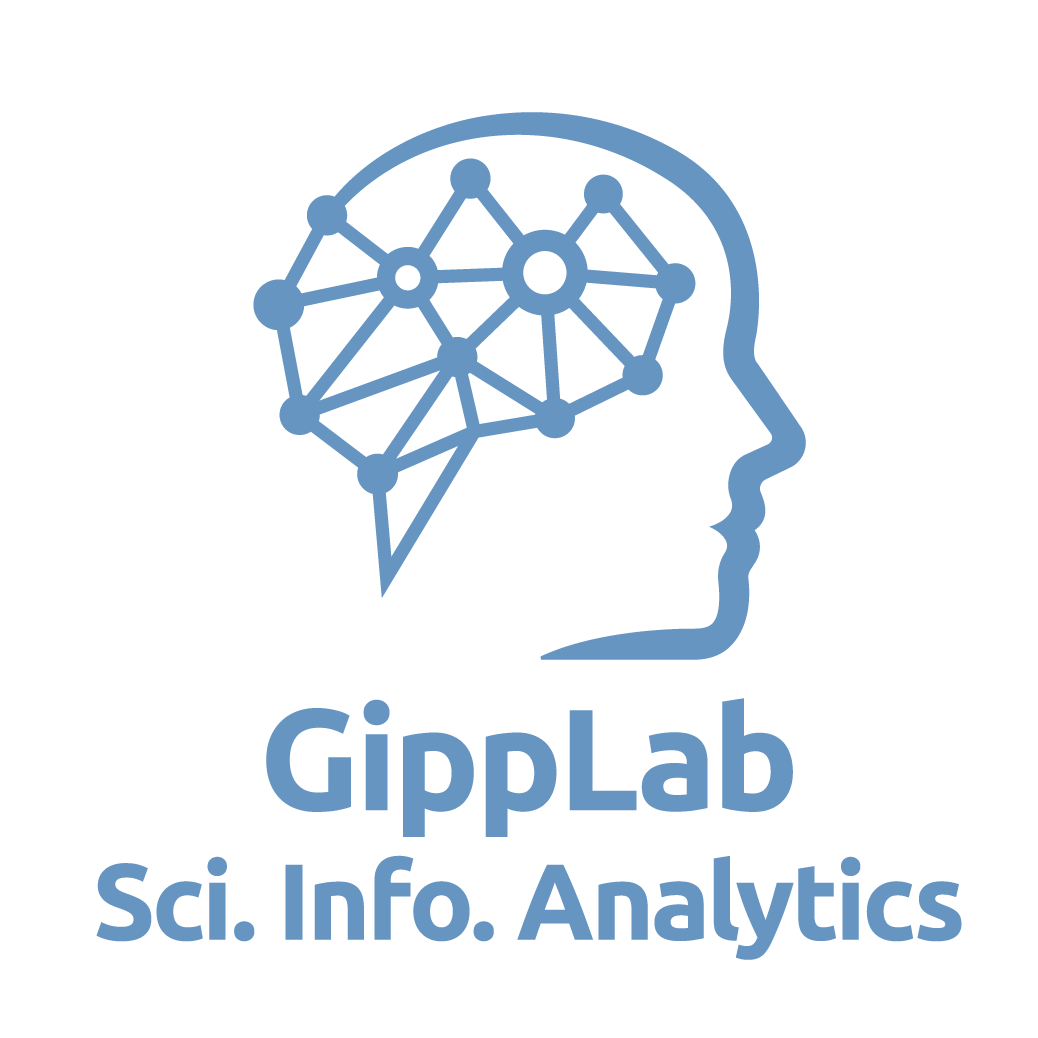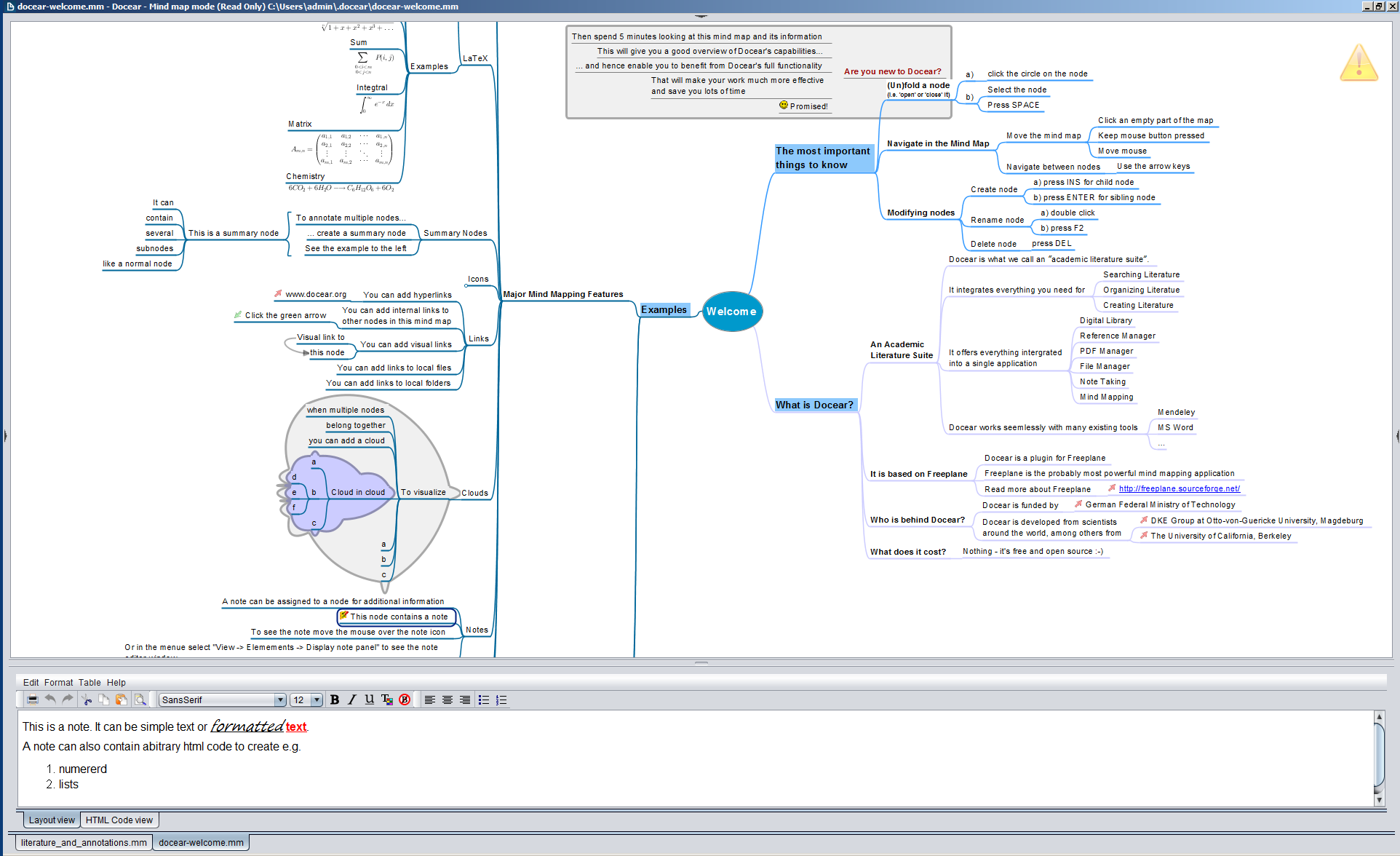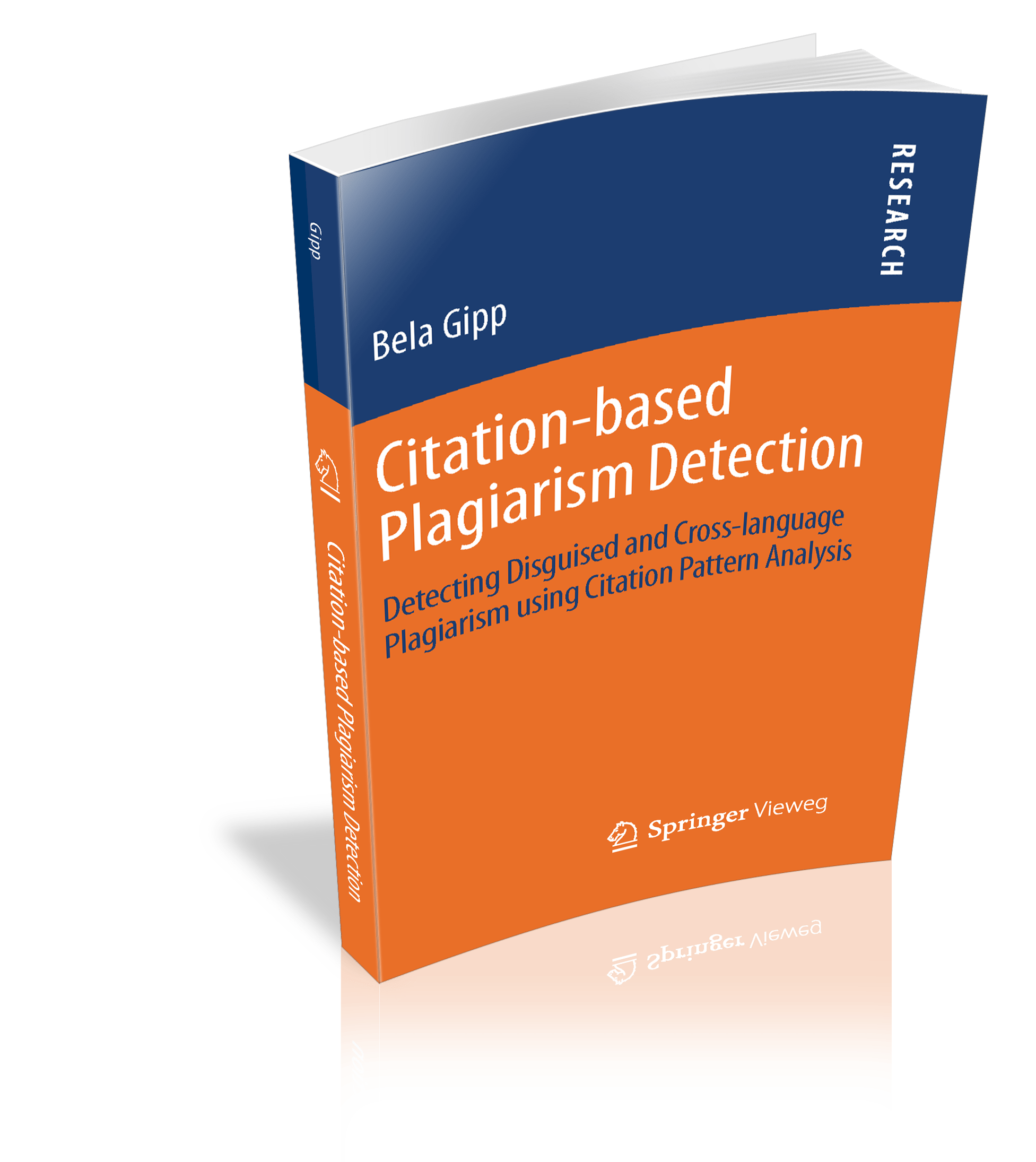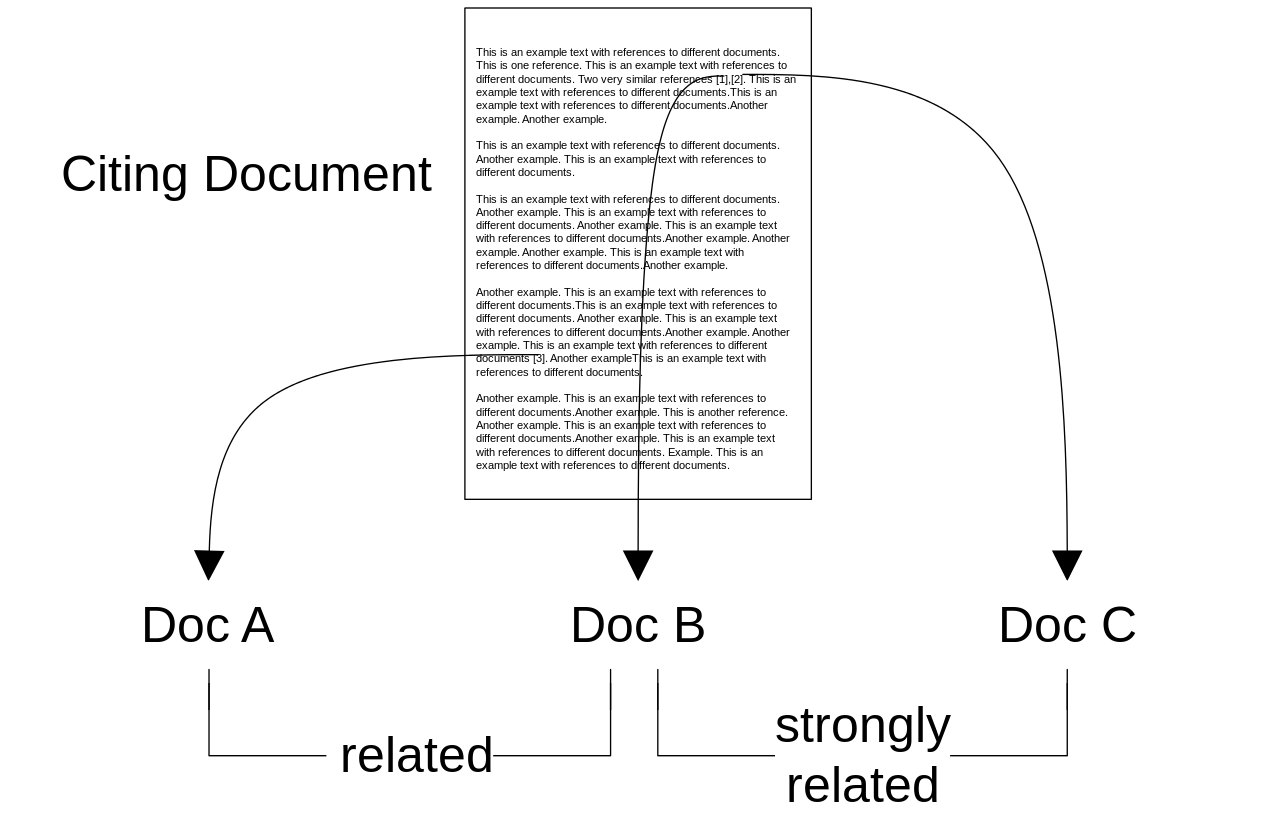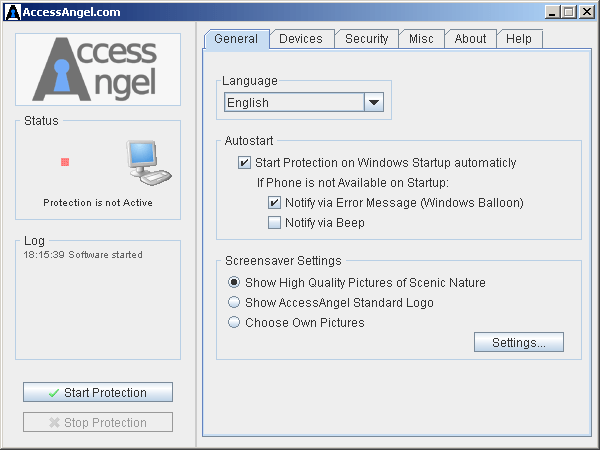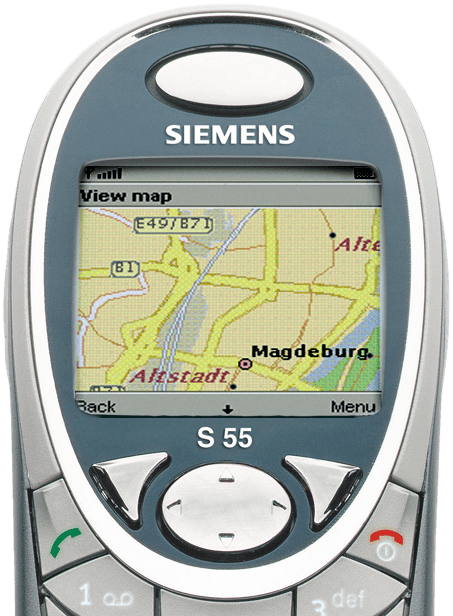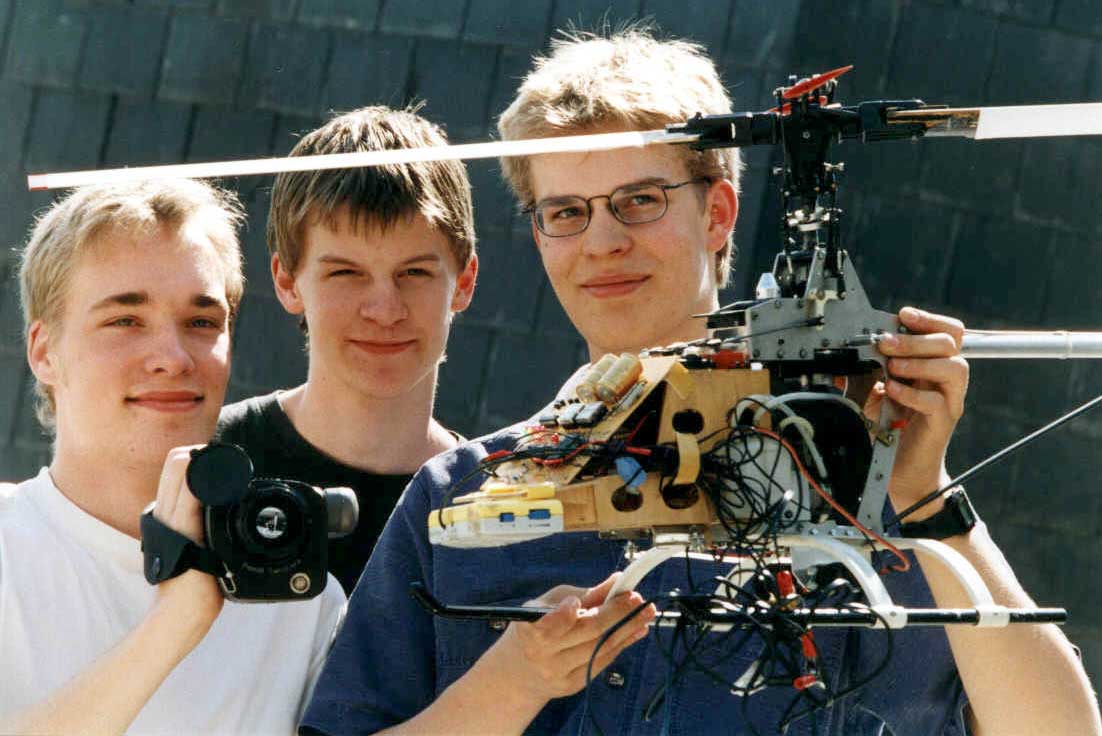Docear combines a mind-mapping tool with a recommender system for academic literature and a reference manager. The mind maps allow users to organize their ideas and to import the annotations they made while reading PDFs, e.g., comments, highlights or bookmarks. The software works with standard PDF annotations, thus can be used with different PDF viewers. Read more…
CitePlag is the first plagiarism detection system to implement Citation-based Plagiarism Detection (CbPD) – a novel approach capable of detecting heavily disguised plagiarism in academic texts.
Existing software only examines literal text similarity to detect plagiarism, and thus typically fails to detect disguised plagiarism forms, including paraphrases, translations, or idea plagiarism. CbPD addresses this shortcoming by additionally analyzing the citation placement in the full text of documents to form a language-independent semantic “fingerprint” of document similarity.
CitePlag implements several citation-based algorithms to analyze the citation patterns of publications.
Here, you can see a screenshot:
For more information, refer to this book.
Mr. DLib’s Recommendations as a Service (RaaS) allows operators of academic products to easily integrate a scientific recommender system into their products. The basic idea of Mr. DLib’s scientific recommender system is to calculate recommendations for research articles, call for papers, grants, etc. on Mr. DLib’s server. Operators of academic products may then request recommendations from Mr. DLib and display the recommendations to their users. Read more…
Co-Citation Proximity Analysis (CPA) is a method to compute both local and global instances of semantic similarity in academic documents by examining citation proximity in the full texts of documents. CPA was developed with two applications in mind: recommender systems and clustering. Regarding the first application, an improved measure of document semantic similarity, which computes similarity at a more fine-grained resolution, has the potential to significantly improve the relevance of academic literature recommendations. Read more…
Co-Citation Proximity Analysis (CPA) is a method to compute both local and global instances of semantic similarity in academic documents by examining citation proximity in the full texts of documents. CPA was developed with two applications in mind: recommender systems and clustering. Regarding the first application, an improved measure of document semantic similarity, which computes similarity at a more fine-grained resolution, has the potential to significantly improve the relevance of academic literature recommendations. Read more…
AccessAngel is a software that enables your computer to lock itself automatically when you leave your workspace, ensuring that no unauthorized access is made to your data. The software achieves this by monitoring the Bluetooth connection between your cell phone and your computer. If the signal gets weak, e.g., when leaving the room, the computer locks itself automatically and unlocks itself upon returning. Read more…
In 2001, GPS receivers were slowly becoming smaller, and it seemed likely they would soon be integrated into mobile phones. At the time, they were still around the size of the mobile phone itself! However, in anticipation, we developed ‘Mobile GPS Locator’ – a software to geolocate mobile devices or PDAs from other mobile devices or from a desktop PC. The system allows pinpointing the location of your friends, co-workers, or any product running the software by simply using your cell phone. Use of the system only requires a cell phone with a compatible GPS receiver and support for Java’s J2ME (Java 2 Micro Edition). Infineon Technologies AG demonstrated the software at the 2002 CeBIT to give an outlook on the future of mobile developments. Read more…
“Every year approximately 7000 people die in car accidents in Germany. Studies estimate that 10% of these people could be saved if emergency services had been notified immediately. Bela Gipp had the idea to develop a system that automatically detects accidents, determines the location, and notifies the emergency services. Together with Jöran Beel and Lars Petersen, he developed a prototype capable of detecting automobile accidents by integrating a microcontroller and an acceleration sensor into a mobile phone. Sophisticated detection algorithms eliminate false alarms, for example, if the phone is dropped. In case of an accident, the emergency services are notified automatically. The location is determined using triangulation in the GSM network. In the future, the Global Positioning System (GPS) could be used to improve precision. Alternatively, if the car has airbags, their deployment could be used to trigger the emergency response. The presented system also features a software that displays the accident location on a map, and if enabled, the GSM-Guardian Angel transmits patient data, including blood group and allergies to medication.”
Text translated into English from the 1999, statement of the National Jury of ‘Jugend Forscht’ on the project “Der GSM-Schutzengel” (“The GSM-Guardian Angel”).In 2002, the project won 1st place in the state-level competition and 2nd place in the national-level competition, in which 7,800 participants competed.
We continued the research project after the Jugend Forscht competition, and sold the product in 2004. The idea has since been adopted, as eCall in Europe and as GM’s OnStar service in North America.
Read more…
Every second counts in avalanche search and rescue missions. In the past, avalanche dogs were called to the rescue. Today, in a time of mass tourism, avalanche rescue must make use of technology. Bela Gipp, Jan-Olaf Stiller, and Florian Krüger had the idea to develop just such an intelligent system. By using the images of an infrared camera mounted on a remotely controllable helicopter, the system can detect temperature differences between snow and human bodies. The helicopter then transmits this data and the images to a control system. For navigation, the helicopter uses a second true-color camera, a Global Positioning System (GPS), and an ultrasonic device for flying in poor visibility conditions. The system and all data collected while patrolling over the snow can be controlled and evaluated using a program over the Internet that the young inventors wrote themselves.
Text translated into English from the 1999, statement of the National Jury of ‘Jugend Forscht’ on the project “Der high-tech Bernhardiner” (“High-tech St. Bernard”). The project placed 1st at state level.

